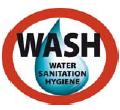Urban Sanitation
Handbook for flood protection antierosion and river training works by Central Water Commission 2012
Posted on 22 Nov, 2014 10:30 AMThis handbook by Central Water Commission aims to provide necessary guidance to the field engineers in the state and central for design, appraisal, construction and monitoring of the flood management works covering all the relevant BIS codes, design manuals, guidelines, technical specifications for construction materials and practices etc. to meet new challenges in the flood management in India.
Guidelines on the integrated low cost sanitation scheme by Ministry of Housing and Urban Poverty Alleviation 2012
Posted on 22 Nov, 2014 10:30 AMThis document by Ministry of Housing and Urban Poverty Alleviation provides guidelines for the low cost sanitation scheme. The main objective of the scheme is to convert the existing dry latrines into low cost flush latrines and to construct new ones.
Analysis of Delhi's budgetary allocations for water and sanitation services in slum areas Article in Economic and Political Weekly
Posted on 22 Nov, 2014 10:30 AMThis article in Economic and Political Weekly, by analysing various budget documents, attempts to capture the quantum of budgetary outlay for Water and Sanitation Services (WSS) in the slums of Bawana and Bhalaswa in Delhi. Further it captures various systemic weaknesses that impede the effective delivery of WSS in these two slum areas.
A communication and advocacy strategy framework for sanitation and hygiene by the Ministry of Drinking Water and Sanitation and UNICEF 2012-17
Posted on 22 Nov, 2014 10:30 AMThe number people practicing open defecation in India is more than 600 million. Though the access to improved sanitation has increased since 2000 the pace of change has been slow. If the current trend continues then it will be difficult for the country to meet its Millenium Development Goal for sanitation. Thus accelerating access to and use of toilets and hygiene practices have become a national priority.
Cost recovery in urban water services : Select experiences in Indian cities A report by Water and Sanitation Program
Posted on 22 Nov, 2014 10:30 AMThe report draws on the report by Water and Sanitation Program (WSP) study from 2008 which made a comparative analysis of 23 urban local bodies (ULBs)—looking at seven cities in detail and another 16 based on secondary data to understand the factors affecting cost recovery.
Process of formation of Jajmau Area Water Partnership in Kanpur Uttar Pradesh : Problems and solutions
Posted on 22 Nov, 2014 10:30 AMIndustrial effluents and sewage water are being diverted to the river Ganga by the cities and towns through which it passes. Nestled on the banks of Ganga, Kanpur, a highly urbanized and industrial city is polluting it most. Apart from the Government of India’s recently constituted National Ganga River Basin Authority, civil societies and NGOs too are putting rigorous efforts to make Ganga pollution free. Though the city has several big and small industries, the leather industries located in Jajmau, the oldest part of the city add to the problem of pollution in the river to a large extent.
Is your neighbourhood a dirty picture -The growing garbage crisis and 10 ways in which you can help
Posted on 22 Nov, 2014 10:30 AM‘A potato peel, a piece of paper and a plastic packet’: The story of garbage
Let’s begin with a story of the journey of our junk, in a typical Indian city.
National water policy views water as an economic good- Resistance shown by civil society with the move towards increasing the water and sewerage tariff Bimonthly newsletter by India WASH Forum
Posted on 22 Nov, 2014 10:30 AM

This edition of the India WASH Forum has the following highlights:
An analysis of 2011 census data on household amenities with respect to drinking water sources and latrine facilities in urban areas of the country A document by CPHEEO Ministry of Urban Development
Posted on 22 Nov, 2014 10:30 AMThis document by Central Public Health and Environmental Engineering Organisation , Ministry of Urban Development, is an analysis of 2011 census data on of the drinking water and latrine facilities in urban areas of the country.





